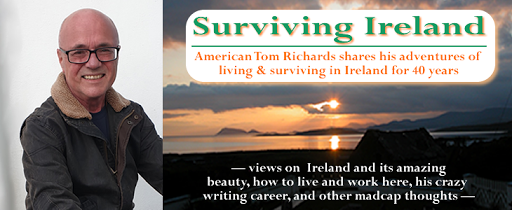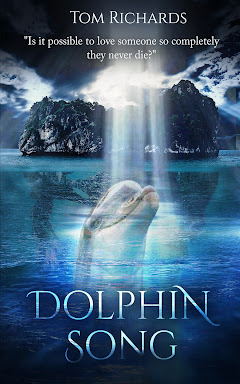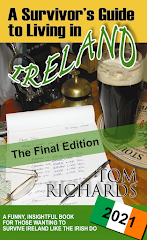The recent discovery of the corpses of up to 800 dead babies in Tuam, County Galway, set off a firestorm. The mass grave, located near a former home for unmarried mothers, tells a tale of neglect and ignorance. These wee bodies remind us too – as if we need reminding – of the unrelenting authority of the Irish Catholic Church and the suffering caused by its cruelty.
What is most unfortunate is this suffering – this warped, disquieting, horrific practice – has gone on for hundreds of years.
For you see, if you were a mother who miscarried, if your baby had not yet received the Catholic right of baptism, the remains of your child would be buried in a remote, unsanctified plot of disused ground. Only an unmarked bit of stone would tell its location.
There, in the Cillin, it would moulder. And you, the mother, would not be told where it was located. You were not allowed to ask for it. You were not allowed to find its last location. You were not allowed to mention your child again.
Instead, you were forced to suffer in silence.
Ignored. Chastised. Beaten.
Abused until at last, perhaps, you lost your mind.
Fields of Shame
In Tuam, the bodies of infants were thrown into a disused septic tank. However, the majority of forgotten unbaptized children were buried in Cillini.
A Cillin is a cemetery and a very unusual and disturbing one at that. Within these un-consecrated grounds the unbaptized are buried, and still remain. But not only unbaptized children rest within the lonely fields. Next to the wee small innocents others thought un-sacred also lie: murderers and rogues, foreign sailors drowned at sea, and those who died with the stain of sin upon them.
But to me it is not the unbaptized who give me most sorrow. No, it is their mothers who have suffered more; much more. To understand that suffering and the betrayal they experienced, I offer a short fictionalized account of one mother's tragic experience. Unfortunately, what I write below is based almost entirely on fact.
We’ll call her Mary. She is 20. It is 1970. The year after man landed on the moon. Nixon is still in office. The Viet Nam War still rages. Most Americans enjoy so many comforts: color television, dishwashers, refrigerators, modern telephone systems, food and housing. Abundance. And most experience a sense of safety.
But not Mary. Because Mary doesn't live in America. She lives in Ireland.
She lives, in fact, in County Cork, in a small village by the sea. Her father is a farmer. Her mother a farmer's wife. Mary's schooling ended when she was 16 and she married a year ago to John. Together they hope to build a future: a family. A house. A small bit of land. John hopes to save to buy a trawler so he can fish for a living. And when they marry it is a grand occasion not only for the happy couple, but for their parents and the entire village as well.
They try for a child. And Mary's prayer is answered when she becomes pregnant. Their joy, they believe, will soon be complete. Mary blooms in the first months of her pregnancy and the excited couple pick names: John Junior if it is a boy. Brigid if they are blessed with a girl.
But as the months go on Mary becomes sickly. Neighbours and the parish priest say their prayers. The local doctor frets over her. But there is nothing to be done. And finally, on a dark night of horror, Mary's worst nightmare comes to pass.
She miscarries.
Her labour too early, the red-tinged fear and pain tells her something is terribly wrong. The priest is called. He gives her Last Rights, just to be sure. She survives. But the baby is still-born. And she knows, even as it leaves her womb, there is no hope.
The priest hurriedly blesses himself and leaves the room, not wanting to be a participant in an event so unholy. No kind words are spoken for the young woman. Nor any blessing for the small innocent deceased babe. Instead, the priest hurries into the darkness, leaving the woman to weep alone.
Not even her husband John can help. Denied the opportunity to console his wife, he buries his own grief and waits to carry out what is expected. For here, as it is in many places across Ireland, traditions - even cruel ones - are unquestioned duties.
Instead, John's father is tasked with the necessary. With a blunt knife he cuts the umbilical cord. He wraps the small parcel, still warm, in a torn bit of blanket. Then he too hurries from the room.
Mary is not even allowed to hold the small one before this horrible leaving. She is not told if it is a boy or a girl despite her pleas. Instead she is ignored. Finally, exhausted, she cries herself to sleep.
At midnight, John and his father hurry furtively from the village. They enter a field dotted only with the white stones of the unnamed - the silent reminders of those who have been buried before and forgotten. John holds the dead young one as his father works a spade. Beyond the field, over a line of trees, John can see the spire of his Church. He tries to forget what he now holds in his arms will enjoy no Church Baptism. Her name will never be recorded on Church records. Her existence will be quashed as if she never existed. Her name will be struck out because she was never given one.
John hides his tears as together they work. They lay the parcel in the pit and cover it, as if burying refuse. They place an unmarked stone at her head as if an afterthought.
In the days that follow Mary begs John, his parents, and her parents to tell of the location of her wee one. They will not. They can not. Mary is not permitted to talk about her child. She is not permitted to visit its remains. She is not permitted to grieve, at least not publicly. She lives in a world of humiliation, guilt, loneliness, sadness, and denial knowing her child will never be acknowledged. Knowing she will never be recognised as a mother who carried her loved infant for so many months. Not even her best friend can discuss what has happened, for discussion will give the infant substance and the infant has no substance because her birth never happened. Besides, her best friend is forbidden from talking to Mary.
Mary is ostracized by her community due to the sin of miscarriage.
Occasionally, secretly and only at night, Mary ventures out to the field. She stands at its edge, examining the many small rocks, wondering which one might hide her child. Her body wracks with grief but she fearfully puts it away, knowing she will be beaten if showing it. Knowing she must keep her sad longing a secret.
She knows this to be true because only a month ago she tearfully asked her husband, "I don't know what to call it when I pray. Is it John Junior or is it Brigid?"
Her question was met with the back of his hand and stony silence.
She never talked about it again. Two years later Mary was diagnosed as mentally unstable. That condition, too, was met with cruel silence. Silence until she eventually cracked under its dark hand; silence until she was placed in a psychiatric unit where she was treated only with more silence and neglect.
Silence until finally forty years later and on his deathbed, John's guilt also cracked.
"It's Brigid," he wrote to her. "A small white rock on the left hand side of the field."
And after John was buried, after the blessings of the priest and the tears of the villagers, after he was laid to rest in the well-kept, consecrated cemetery in the company of blood relations who had gone before... months after that...
Mary, eventually released from lock up, finally ventured into the field. Next to a forgotten crumbling wall she found a small white stone overgrown with tall grass. But her grief was finally given a home, and she blessed the un-consecrated grave of Brigid with bright tears. And only days before she died did she finally erect a small plaque hidden deep in the corner of the field, a secret known only to her.
"To Brigid from Mammy. Never forgotten in my heart."
The Horror
What I have written above is fiction but it is all based on fact. Miscarried babies or the young who were not baptized were never recognised, never given final rest, never placed in consecrated grounds. Instead, they were buried in the thousands of Cillini dotted across Ireland like mothers' tears. Once again, the Irish Catholic Church turned its back on those deserving its greatest compassion.
Today, some within Irish society are recognizing the sin made against these innocent babes and their mothers and fathers. Some of the Cillini have been rescued. Grass has been tidied. Stones set properly. Crosses erected. Disused lonely fields finally sanctified by the Church who had ignored them for so long.
But others, many others, lie abandoned and forgotten, the children buried there lost for all time - until they are found, as they have been in Tuam, County Galway.
Only their mothers' tears, long since dried, can remember. Such was Ireland and the Irish Catholic Church as late as 1970. And, I’m sorry to report, for so many generations before.
May those days never return.
UnBaptized, as both screenplay and novel, is currently in development by Tom Richards.
If this blog interests you and you want to learn more about Ireland why not consider purchasing A Survivor's Guide to Living in Ireland 2017 Edition. Are you thinking about living and working in Ireland? Would you like to move to Ireland? Do you want to know how to get an Irish work visa in this country? Do you need to know how Brexit and Trump policies may affect your plans? If so, consider purchasing the 2017 edition of A Survivor's Guide to Living in Ireland by Tom Richards. Now almost 90,000 words long, this book could make the perfect gift for those interested in this wonderful country. Over 14,000 people have now learned how to live, laugh, and drink like the Irish by reading this Kindle ebook. I hope you enjoy, and my very best - Tom





No comments:
Post a Comment